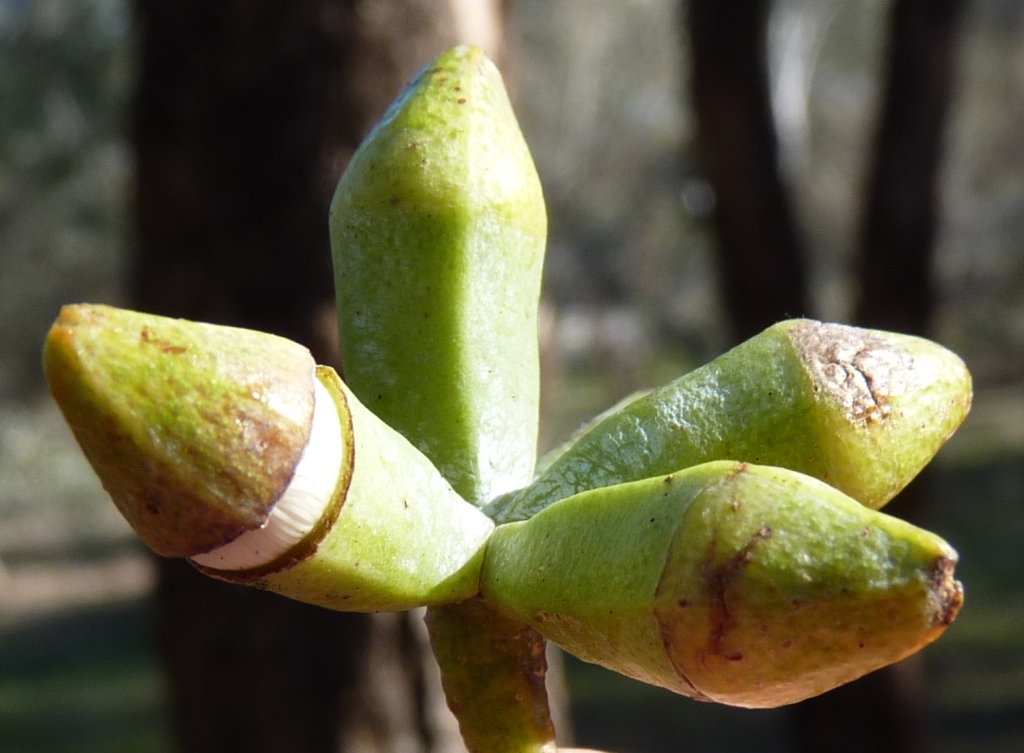Eucalyptus albens
Benth. White BoxTree to 25 m tall; bark rough over trunk and to base of large branches, fibrous, becoming tessellated, with pale grey and white patches; above, smooth, white. Juvenile leaves petiolate, alternate, ovate to orbicular, to 15 cm long, 11 cm wide, blue-grey, glaucous; adult leaves petiolate, alternate, broadly lanceolate, 10–16 cm long, 1.7–3 cm wide, dull, blue-grey, glaucous, concolorous; reticulation dense, with scattered, intersectional oil glands. Inflorescences terminal panicles; peduncles to 1.8 cm long, 7-flowered; buds sessile or shortly, stoutly pedicellate, fusiform, often slightly curved, to 1.8 cm long, 0.6 cm diam., no scar; operculum conical; stamens irregularly flexed; anthers adnate, globoid; ovules in 4 vertical rows; flowers white. Fruit sessile or shortly pedicellate, barrel-shaped to slightly urceolate, to 1.5 cm long, 1 cm diam.; disc descending; valves 4, below rim; seed brown, irregularly ovoid and slightly flattened, surface shallowly reticulate, hilum ventral. Flowers Aug.–Feb.
VVP, VRiv, MuF, GipP, Gold, CVU, GGr, NIS, EGL, EGU, HSF, HNF, MonT, VAlp. Also SA, Qld, NSW. A foothills species of mainly north-eastern Victoria, with other stands between Omeo and Swifts Creek, and in the upper Snowy River area from the border to Suggan Buggan, McKillops Bridge and Bonang.
The combination of its pale box bark, large juvenile leaves, blue-grey, glaucous crown and generally barrel-shaped fruits distinguish it from other boxes in Victoria. Forms with smaller, green leaves, widespread in central Victoria, link this species to Eucalyptus microcarpa.
Brooker, M.I.H.; Slee, A.V. (1996). Eucalyptus. In: Walsh, N.G.; Entwisle, T.J., Flora of Victoria Vol. 3, Dicotyledons Winteraceae to Myrtaceae, pp. 946–1009. Inkata Press, Melbourne.
 Spinning
Spinning


